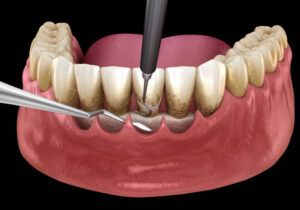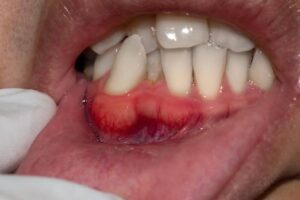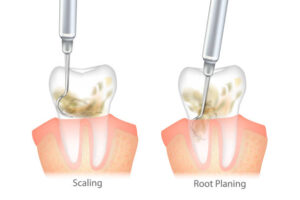When it comes to oral health, gum disease, particularly periodontitis, is the uninvited guest causing havoc behind the scenes. This sneaky ailment is often left unnoticed until severe symptoms kick in. But don’t fret! Our comprehensive guide is here to help you understand periodontitis, recognize its symptoms, and explore the world of periodontal treatments that can help you regain control over your oral health.
What is Periodontology?
Periodontology is a specialty within dentistry focused on studying and treating the structures supporting your teeth – essentially your gums. This field is vital in diagnosing, preventing, and treating diseases like periodontitis, a severe gum disease.
What is Periodontitis?
Periodontitis, often termed gum disease, is a serious infection of the gums that can damage your gums and the bone supporting your teeth. Left untreated, it could lead to tooth loss and has links with other health problems like heart disease.
Symptoms of Periodontitis
Like a stealthy ninja, this gum disease often creeps in unnoticed until it’s advanced. However, certain symptoms can alert you to its presence:
- Swollen or tender gums

- Bleeding gums during brushing or flossing
- Persistent bad breath
- Receding gums
- Loose teeth
- Changes in bite or tooth position
If you notice any of these symptoms, contact your dentist immediately.
Periodontitis Treatments: Restoring Gum Health
The good news is that periodontitis can be treated, especially when caught early. The main goal is to control the infection and restore the health of your gums.
1-Scaling and Root Planing
The first line of defense against periodontitis is usually a professional cleaning called scaling and root planing. This deep cleaning process removes plaque and tartar build-up, and smoothens the root surfaces, discouraging further build-up and helping your gums reattach to your teeth.
2- Medications
In some cases, your dentist might prescribe medications to help control the bacterial infection. This could range from mouth rinses to antibiotics, and they’re usually used in combination with scaling and root planing.
3- Periodontal Surgery
When non-surgical treatments aren’t enough, your dentist may recommend surgery. Flap surgery can help remove tartar in deep pockets or reduce the pocket size, making it easier to clean the area. For lost bone or gum tissue, bone and tissue grafts can help regenerate the lost structures.

Periodontology and periodontitis treatments play a vital role in maintaining our oral health. Regular dental check-ups can help detect and treat periodontitis early, keeping your smile healthy and beautiful!





